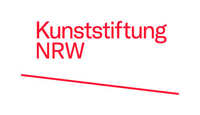
Grußwort Penny Black
Sehr geehrte Frau Dr. Sinnreich, Generalsekretärin der Kunststiftung NRW
sehr geehrter Herr Sprick,
liebe Frau Dr. Peeters, liebe Frau Fretter,
liebe Katy Derbyshire, lieber Simon Pare,
sehr geehrte Damen und Herren,
And this is it for the German!
Sometimes there comes along a translation that has such an ease and a fluency that it belies the original's deep complexity and linguistic challenges. Simon Pare's translation of Der fliegende Berg is such a translation. Christoph Ransmayr's verse novel – and I will just pause here to repeat – Christoph Ransmayr's novel written in verse works at so many different levels. It is the story of two estranged brothers who come together following the death of their father, it is the story of how the one brother follows his sibling to climb a mythical mountain in farthest Tibet. It is the story of the politics of China in Tibet. It is the story of Ireland and Irish politics as seen through the eyes of their Catholic nationalist father. It is the story of a love affair between one of the brothers and a member of the Khampa clan with whom they travel to the mythical flying mountain, so named because the clan believe that the mountains were flown in from the sky and have to be nailed down to stop them floating away. It is a manual on how to – or how not to - climb a mountain. And it is a story where time and breath and snow and thought and fear and joy interleaf on one page, if not in one paragraph.
I won't even start on the challenges of translating a novel that is written in Flattersatz, because the fluidity of Simon's translation suggests that it took no effort at all. I won't talk about words, because that is the first tool that a translator must have in their toolkit, and Simon's toolkit is full to overflowing.
Instead I would suggest the most difficult challenge in translating this book is creating the world of the story. And this is what English does well. Our language is so flexible and free of rules that it is able to bring contradictory ideas and words into the same sentence without needing to pin them down precisely.
I had wanted to describe this world of the Flying Mountain as a tapestry, but a colleague yesterday – and excuse me while I segue for a moment to the joys of coming again and again to this house with so many wonderful colleagues - this colleague reminded me of a quote by Cervantes that says: a translation is like looking at a Flemish tapestry on the reverse side, for though the figures are visible, they are full of threads that make them indistinct, and they do not show the smoothness and brightness of the right side.
Who am I to contradict Cervantes, whose Don Quixote has been translated into 145 languages? And yet ... I would suggest that Simon has taken an exquisite meters-long tapestry by a master and re-woven it, strand for strand, in colours equally bright, with none of the knots or threads showing, so the viewer is roused to walk its length from left to right, inspired and enriched.
And for that achievement Simon, we, the members of the jury, congratulate you.



